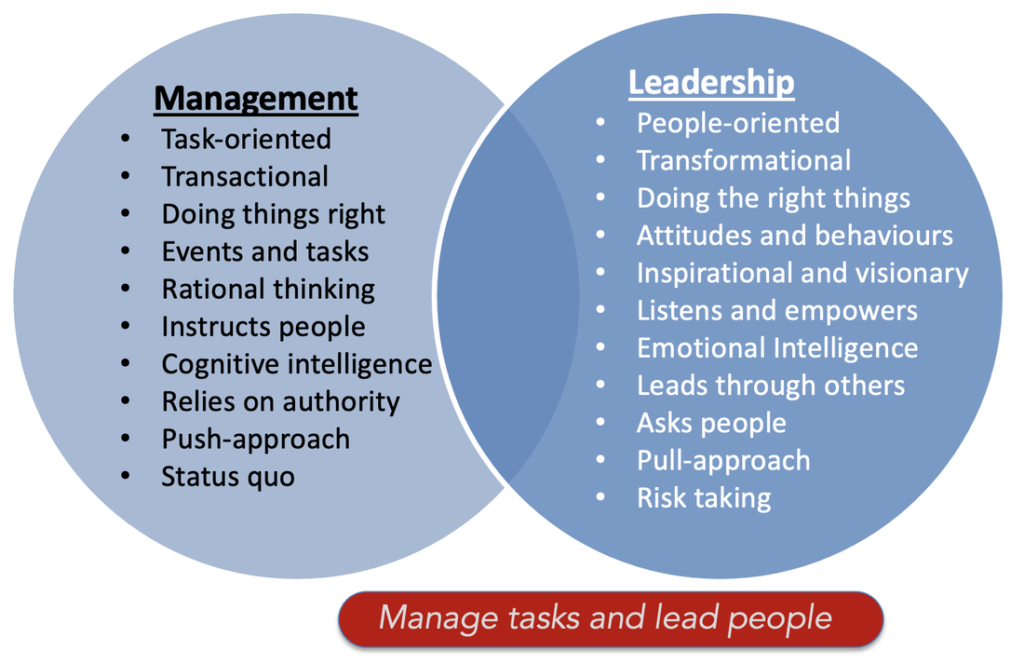Leadership is when someone guides and influences a group of people to work together toward a common goal. However, there is no universal process that fits every situation like a magic potion. Adaptation is key when it comes to leadership styles in projects, ensuring they align with the specific needs of the project, the surrounding environment, and the stakeholders engaged.
Tailoring Leadership Style
This adaptation is influenced by factors such as:
- Experience with Project Type:
- Teams familiar with a project type may need less leadership, while new projects often require more oversight.
- Maturity of Team Members:
- Experienced team members may require less supervision than those new to the organization, team, or technical field.
- Team member characteristics (e.g., attitudes, moods, needs, values, ethics);
- Organizational Governance:
- The leadership style of top management influences the team’s leadership, and organizational structure determines authority distribution.
- Organizational characteristics (e.g., its purpose, structure, and type of work performed);
- Distributed Teams:
- In global projects, technology is essential for effective communication. Strategies include collaboration sites, project team sites, audio/video meetings, messaging, texting, and at least one face-to-face meeting for relationship building.
8 Famous Leadership Style

Laissez-faire /Delegative Leadership:
- This style is like letting things happen on their own without too much bossiness. Leaders give freedom to the team. It’s more of a Hands-Off Leadership
- Example: A teacher who lets students choose their projects and learn at their own pace.
- Autocratic Leadership:
- This is when the leader is in full control and makes decisions without much input from the team. This is a needed style where quick decision-making is required.
- Example: A captain of a ship who makes all the decisions without asking the crew.
- Participative/ Democratic Leadership:
- This is about working together. The leader and the team discuss and decide things jointly. A very important point is that Decision-Making responsibility rests with the Leader.
- Example: A group of friends planning a party together, each sharing ideas.
- Transactional Leadership:
- This is like a deal. The leader rewards or punishes based on how well the team follows the rules.
- Example: A manager who gives bonuses for meeting sales targets.
- Transformational Leadership:
- Leaders inspire and motivate the team to reach higher goals. They encourage creativity and innovation.
- Example: A coach who inspires the team to excel and go beyond their limits.
- Servant Leadership:
- The leader focuses on serving and helping others. It’s about putting others’ needs first.
- The 10 characteristics of servant leadership are listening, empathy, healing, awareness, persuasion, conceptualization, foresight, stewardship, commitment to the growth of people, and building community. These characteristics are conducive to building authentic, trusting relationships with team members.
- Example: A supervisor who supports the team and helps them grow in their careers.
- Charismatic Leadership:
- This leader has a magnetic personality and can inspire and attract followers. They are very self-confident, enthusiastic, and highly energetic, and they can inspire others with their qualities.
- Example: A speaker who captivates the audience with their energy and passion.
- Interactional Leadership:
- This style combines different approaches based on the situation. The leader adapts as needed.
- Example: A project manager who switches between being hands-on and letting the team take charge depending on the project’s phase.
Situational Leadership
The key idea behind leadership is that there is no single best leadership style; it depends on factors such as the task at hand, the capabilities of the team, and the overall context. Leaders using situational leadership may shift between being more directive or more supportive, depending on what the situation demands. This flexibility allows them to better guide and motivate their team to achieve success in various scenarios.
There are two well-known Leadership Models
- Situational Leadership® Model by Paul Hersey and Ken Blanchard
- OSCAR Coaching and Mentoring Model by Karen Whittleworth and Andrew Gilbert
Comparison of Manager and Leadership
The comparison of leadership and management emphasizes their distinct nature. While the terms are sometimes used interchangeably, they have unique characteristics. Management is closely linked to directing others using expected behaviours to reach a known destination. In contrast, leadership involves collaborative approaches, such as discussion and debate, to guide others towards a goal.
The choice of methods by a project manager reflects differences in behaviour, self-perception, and project role. The provided table outlines important distinctions between management and leadership. Successful project managers are advised to integrate both leadership and management skills, striking a balance tailored to each situation. The project manager’s leadership style often reflects how they employ both approaches in the project environment.
Conclusion
In the context of the conversation, leadership refers to the ability of individuals to guide, influence, and adapt their approaches in various situations. Specifically, the discussion touched upon different leadership styles, the concept of situational leadership, and a coaching and mentoring model.
Leadership involves:
- Adaptability: Leaders should be adaptable, adjusting their styles based on the needs of the situation, the experience of the team, and other relevant factors.
- Understanding of Leadership Styles: Different situations may require different leadership styles, such as autocratic, participative, transformational, and more.
- Situational Leadership: The recognition that effective leadership involves assessing the readiness level of followers and adjusting leadership behaviors accordingly.
- Structured Approaches: The OSCAR coaching and mentoring model illustrates a structured approach to leadership in coaching and mentoring scenarios. It emphasizes setting clear outcomes, understanding the current reality, exploring options, assessing commitment, and establishing a way forward.
Overall, leadership, as discussed in this blog, involves flexibility, awareness of various leadership styles, and the ability to employ structured models for guiding and supporting individuals or teams toward specific goals.



One thought to “Leadership, Leadership Styles and Factors that influence Leadership Styles”
Pingback: 12 Project Management Principles - Mudassir Iqbal